
Mazda has put a lot of effort into the new 2 to make it competitive with the best of the supermini class. How does it fare?

The new 2 follows Mazda's Kodo design language, with plenty of creases and curves along the flanks and a sharp front end.
- Skip advertAdvertisement - Gallery continues below

The rear is slightly bulbous, but all models get a subtle tailgate spoiler.
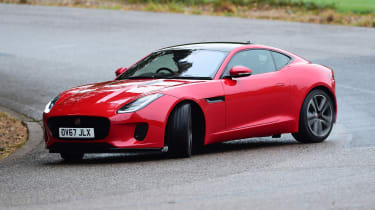
Inside, the Mazda 2 looks smart and feels robust, if not as plush as the Polo. Stylish eyeball vents are inspired by Audi, while the steering wheel and gearlever feature soft leather.
- Skip advertAdvertisement - Gallery continues below
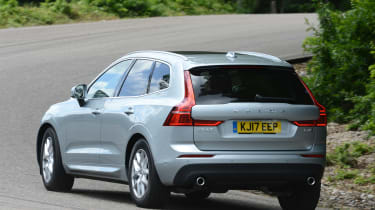
Rear legroom is now a match for its rivals compared to the old model, while only taller occupants will find the sloping roofline eating into rear headroom.

The boot has the same 280-litre capacity as the VW Polo, but it's hobbled by a high load lip and narrow opening.
- Skip advertAdvertisement - Gallery continues below
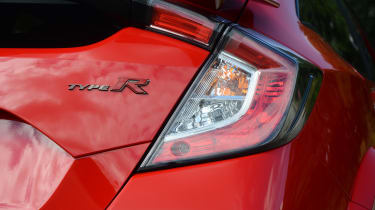
"Mazda has a 'right-sizing' policy with its engines, but it has mixed results in the 2. The 1.5 lacks the low speed muscle that make the turbo VW and Ford so effortless." - James Disdale, road test editor.

The speedometer is large and flanked by digital readouts for the rev counter and trip computer
- Skip advertAdvertisement - Gallery continues below
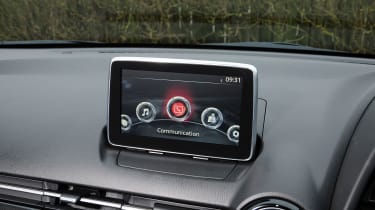
There's plenty of standard kit, including sat-nav, cruise control, keyless entry and DAB radio - you'll have to pay extra for these on the VW or Ford.

"The latest 2 is more grown-up than before, but it's not los tthe previous car's sense of fun, with sharp handling and a short-throw gearshift." - Sean Carson, senior road tester.
- Skip advertAdvertisement - Gallery continues below
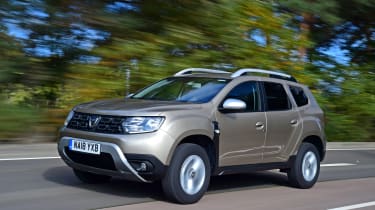
The steering isn't as weighty as the Fiesta's, but it's quick and precise, helping the Mazda dart through corners with impressive agility.
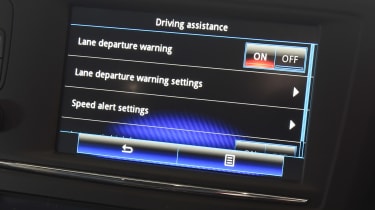
The application of SkyActiv technology means the 2 now tips the scales at 975kg, which has a positive impact on the car's performance.
- Skip advertAdvertisement - Gallery continues below
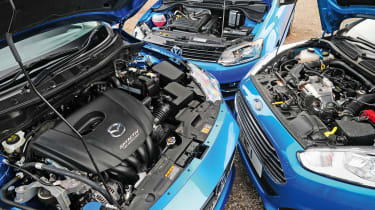
Mazda's 1.5-litre engine comes in three states of tune, while the Polo comes with a 1.2-litre turbo and the Fiesta a 1.0 three-cylinder turbo.
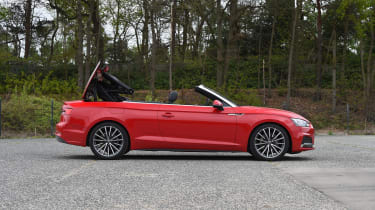
If you're after a supermini that delivers big-car driving dynamics and refinement, then look no further than the Polo.
- Skip advertAdvertisement - Gallery continues below
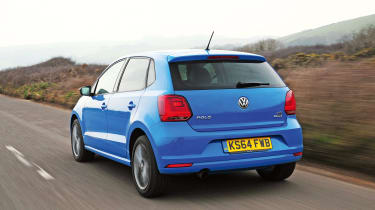
The 1.2 TSI is a smooth and effortless performer, and it edged ahead of the Fiesta and Mazda in our in-gear tests.

"The Polo feels a class apart when it comes to quality. With its tight shut lines and top-notch materials, the VW brings big-car premium appeal to the supermini sector." - James Disdale, road test editor.
- Skip advertAdvertisement - Gallery continues below
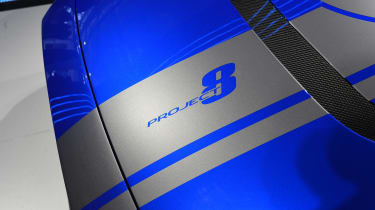
Access to the rear of the Polo is easy thanks to wide-opening rear doors, while the flat rear bench can accommodate three adults at a pinch.
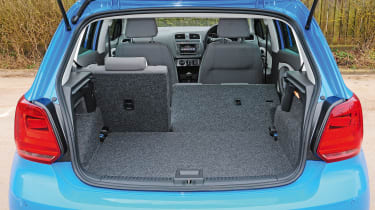
The Polo matches the Mazda's 280-litre boot, but it benefits from a lower load lip and wider opening. There's a flase boot floor to create a flat loadbay when the rear seats are folded.
- Skip advertAdvertisement - Gallery continues below
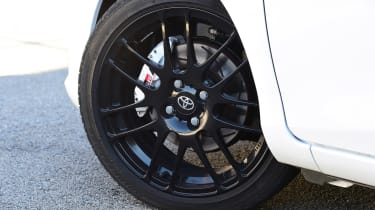
VW has made few changes to the Polo's design, but there are minor tweaks to the exterior design. Higher-spec models feature LED headlights, and the classic design works well.

At the track, we managed a 0-60mph sprint in 9.9 seconds, comparing favourably with VW's claimed sprint time of 10.8 seconds.
- Skip advertAdvertisement - Gallery continues below
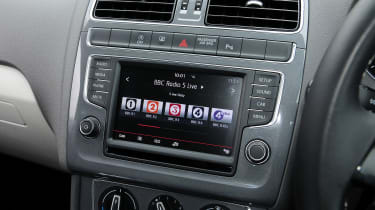
"VW's grown-up appeal extends to its hi-tech options, which include adaptive cruise control and a reversing camera." - Dean Gibson, deputy road test editor.
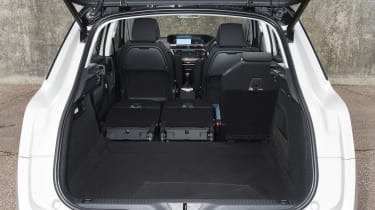
The comfort and refinement of the Polo doesn't come at the expense of handling. There's a fair amount of body roll, but grip is good, and the VW isn't unsettled by mid-corner bumps.
- Skip advertAdvertisement - Gallery continues below
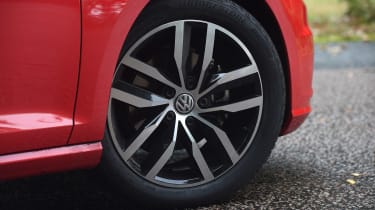
The steering is naturally weighted and precise, while visibility is good - making the car easy to place.
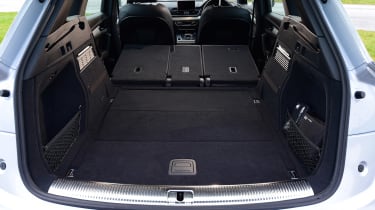
"The Ford still sets the standard for driving fun. The quick steering, nimble handling and three-cylinder engine put you at the centre of the action. Yet this agility is matched to a supple ride and decent refinement." - Sean Carson, s
- Skip advertAdvertisement - Gallery continues below
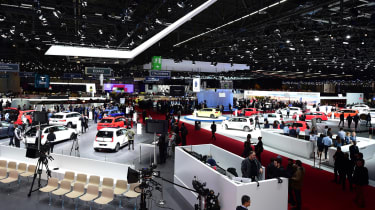
Despite its small capacity, the Fiesta's 1.0-litre EcoBoost engine pulls smoothly and eagerly from idle, without the surge of torque that afflicts the Polo.
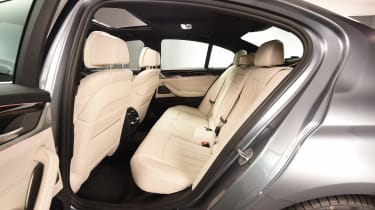
Driving position is excellent in the Fiesta, further enhancing the involving dynamics. Some of the plastics inside feel a bit low-rent, though.
- Skip advertAdvertisement - Gallery continues below
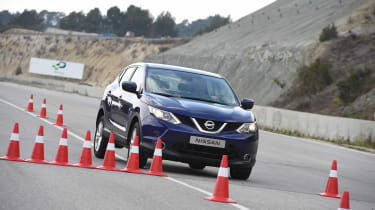
Access to the back of the Fiesta is good, but passengers will feel more hemmed in thanks to narrow rear windows and dark cabin trim.

The Fiesta offers a 290-litre boot if you stick with the standard repair foam; this drops to 276 litres if you spec the £100 space saver spare wheel, though. There's a high load lip and the rear seats don't fold flat, though.
- Skip advertAdvertisement - Gallery continues below
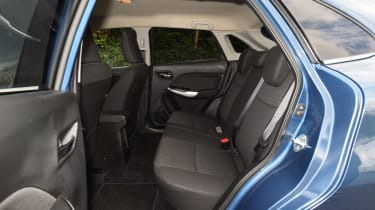
"Ford dealers are always keen to haggle, so you should be able to slash hundreds from the Fiesta's bottom line." - James Disdale, senior road tester.

Fiesta's blocky blue LCD display looks dated compared to the larger touchscreens in the Polo and Mazda.
- Skip advertAdvertisement - Gallery continues below
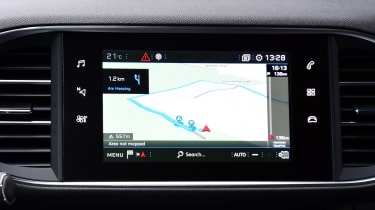

In the corners, the Fieta's sharp chassis means it feels agile and delivers poise and plenty of grip. It has a supple ride over all surfaces, too.
- Skip advertAdvertisement - Gallery continues below
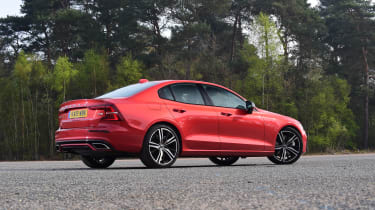
The Fiesta is a surprisingly relaxed long-distance cruiser, thanks to the smooth engine and low levels of road noise.
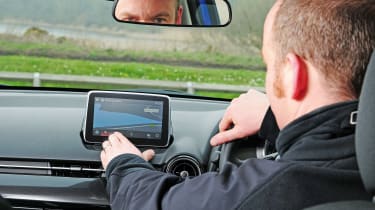
- Skip advertAdvertisement - Gallery continues below
Recommended

Car Deal of the Day: Hunting for a hybrid hatch? Get the Mazda 2 Hybrid for under £200 a month

Cheapest hybrid cars on sale 2025
Most Popular
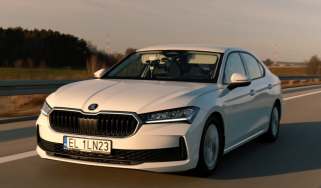
Who needs hybrids? Diesel Skoda breaks world record with 1,759 miles on one tank
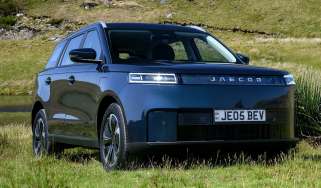
Car Deal of the Day: Jaecoo E5 EV brings premium SUV attitude for a compact £243 a month
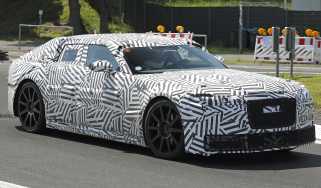
New Jaguar GT shows off more of its controversial and crucial design